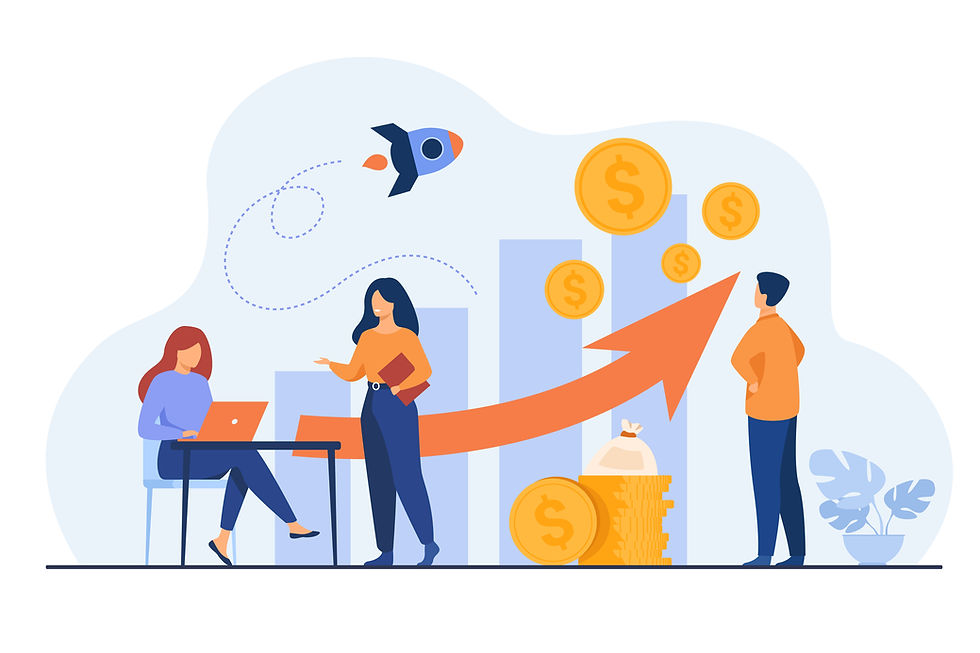How Fintech Companies are Creating Ecosystems that are Helping Different Business Sectors
- Viresh Kavikar

- Mar 2, 2023
- 3 min read

The fintech ecosystem is a rapidly growing and evolving space, with new companies, technologies, and services emerging all the time. It is also a highly collaborative and interdependent space, with fintech companies working together and integrating with traditional financial services companies, such as banks and insurance providers, to create more comprehensive and innovative financial services solutions. The fintech ecosystem is transforming the financial services industry and creating new opportunities for innovation, growth, and customer value.
By creating these ecosystems, fintech companies are helping businesses of all sizes to improve their financial operations, reduce costs, and drive growth.
Here are 4 most Important Fintech Ecosystems which have created an impact in different sectors of business.
Payment Ecosystems: A payment ecosystem in fintech refers to the infrastructure and system that enables the processing and movement of money between different entities, such as merchants and consumers, or banks and merchants. It includes the various components, such as payment gateways, processors, issuers, acquirers, and card networks, that work together to facilitate the transaction. For instance, companies like Stripe and PayPal are creating ecosystems that make it easy for businesses of all sizes to accept payments from customers through a variety of channels, including online, mobile, and in-person.
Digital Banking Ecosystems: Digital banking ecosystems in fintech aim to provide consumers and businesses with a more convenient, accessible, and personalized banking experience. They typically offer a range of financial products and services, such as checking accounts, savings accounts, debit cards, money transfers, loans, and investment opportunities. Some of the key features of digital banking ecosystems include real-time account updates, budgeting and financial planning tools, and 24/7 customer support through chat or phone. Fintech companies like N26, Chime, and Monzo are examples of digital banking ecosystems that have disrupted the traditional banking industry by offering consumers and businesses an alternative to traditional banking services.
Investment Ecosystems: Investment ecosystems in fintech aim to make it easier and more convenient for individuals and businesses to invest their money and grow their wealth. They typically offer a range of investment products and services, such as diversified portfolios of stocks, bonds, and other assets, as well as financial planning and advice. Some of the key features of investment ecosystems include real-time investment tracking, low fees, and accessible user interfaces. Companies like Robinhood and Wealthfront are creating investment ecosystems that make it easy for people to invest in stocks, ETFs, and other financial products, often with lower fees and barriers to entry than traditional investment platforms.
Lending Ecosystems: A lending ecosystem in fintech refers to a system that facilitates the lending and borrowing of money through the use of digital technologies. It encompasses a wide range of financial products and services, such as peer-to-peer (P2P) lending, online personal loans, small business loans, and alternative lending platforms. Some of the key features of lending ecosystems include real-time loan tracking, quick loan processing times, and lower interest rates compared to traditional lending options. Companies like Kabbage and On Deck are creating lending ecosystems that make it easier for small businesses to access loans and other forms of financing, often with a faster and more streamlined application process.
These are just a few examples of the kinds of ecosystems that fintech companies are creating to help different sectors. By creating these ecosystems, fintech companies are improving the efficiency, accessibility, and overall experience of financial services, making it easier for people and businesses to manage their finances.
Comments